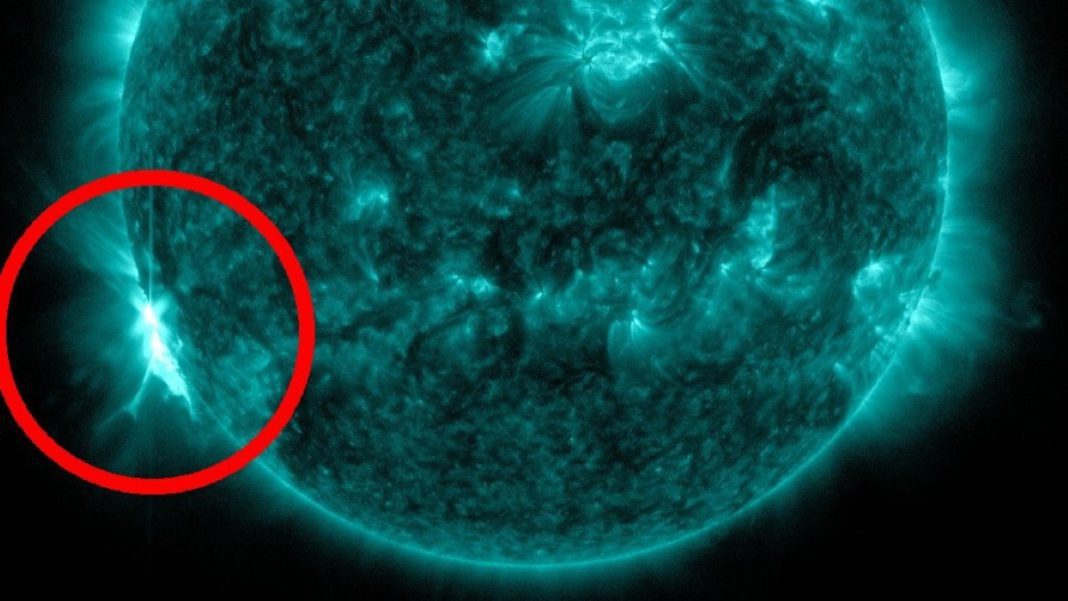UNITED STATES: In a dramatic display of solar activity, a hidden sunspot on the southeast limb of the sun erupted in a powerful M9.6-class solar flare on May 16 at 12:43 p.m. EDT (1643 GMT).
While not directly facing Earth at the time, the effects of the eruption caused moderate radio blackouts over parts of North America, Central America, and South America due to the radiation from the event, according to the Space Weather Prediction Centre of the National Oceanic and Atmospheric Administration (NOAA).
The sunspot, concealed by the sun’s rotation, will soon come into view of Earth and directly face us by the weekend.
Solar flares occur when magnetic energy accumulates in the solar atmosphere and the sun releases it in an intense electromagnetic radiation burst.
The solar flares are categorized by size and strength, with X-class flares being the most potent, followed by M-class, C-class, B-class, and A-class flares. The recent eruption registered as an M9.6 flare, shy of X-class intensity.
The unique circumstance of the flare being partially eclipsed by the sun’s edge resulted in its classification as an M-class flare.
Despite its hidden position, the M-flare had significant impacts, causing extensive radio blackouts due to the intense pulse of X-rays and extreme ultraviolet radiation directed towards Earth.
The radiation reached our planet in just over eight minutes, travelling at the speed of light and ionising the upper layer of Earth’s atmosphere known as the thermosphere.
This ionisation triggered shortwave radio blackouts in the sun-lit areas of Earth at the time. Solar activity is rising as part of solar cycle 25, which scientists predict will peak in 2025.
With increased solar flares expected, it is critical to stay informed about space weather conditions.
The National Oceanic and Atmospheric Administration’s Space Weather Prediction Centre provides the latest updates and solar X-ray data from their GOES weather satellites stationed over the eastern and western United States.
As we continue to observe and study these awe-inspiring solar phenomena, it serves as a reminder of the dynamic nature of our sun and its impact on our technological systems.
Understanding and monitoring space weather is crucial for protecting satellites, communication networks, and power grids from the potential disruptions caused by powerful solar flares.
Also Read: Sun’s Powerful Solar Flare Activity Poses Risks to Technology and Infrastructure



